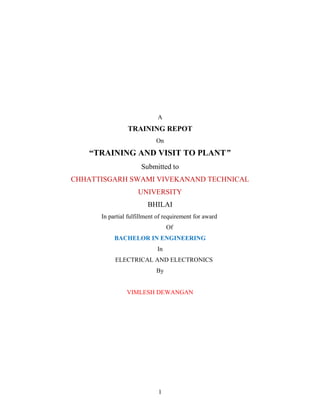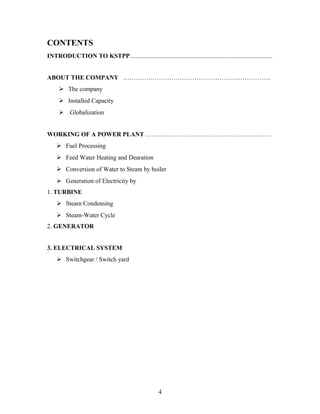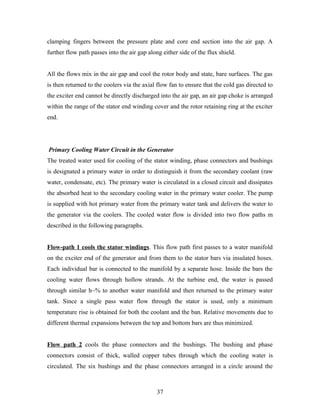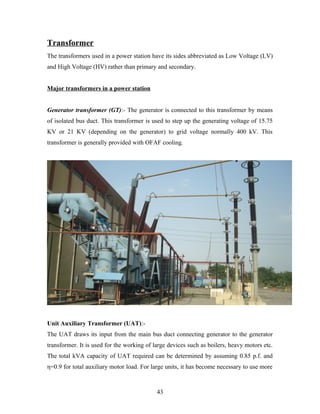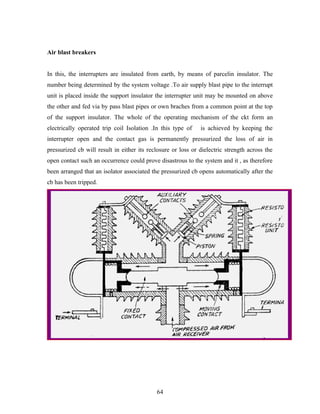This training report summarizes a student's training and visit to an NTPC power plant. NTPC is India's largest power generation company. The report provides an overview of NTPC, including its headquarters, plants, coal sources, installed capacity, awards, and goals to expand capacity. It also describes the working of a thermal power plant, including the processes of fuel processing, steam generation, electricity generation via turbines and generators, and the steam-water cycle.
